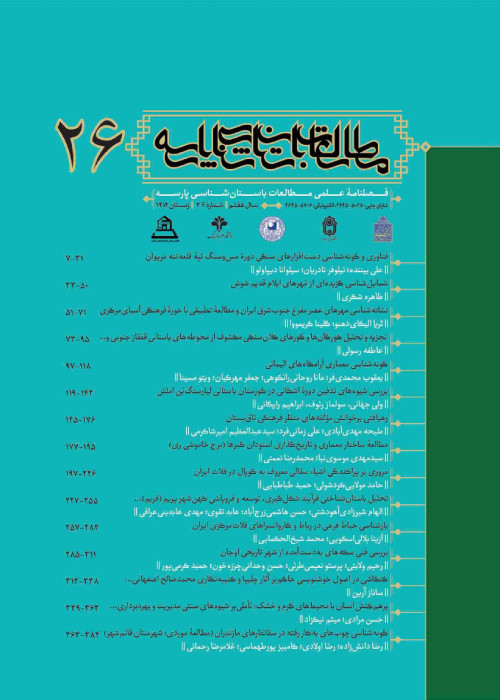Analysis of the Neolithic Period of East of Lake Urmia Based on Archaeological Studies in Horand Region
Author(s):
Article Type:
Research/Original Article (دارای رتبه معتبر)
Abstract:
The Neolithic process and the extension of the Neolithic lifestyle have been one of the issues raised in recent decades in archeology, and archaeologists have come up with a variety of approaches to explain why and how this event occurred in human life. The Neolithic period can be considered an important milestone in the history and life of mankind. Archaeological studies show that several regions in the Near East experienced Neolithization, and Azerbaijan was a regional marginal area that expanded and reflected the Neolithic centers. In the late Neolithic stage, for the first, non-indigenous groups settled in the plains around Lake Urmia as the center of the area and then this center became the center spread to the outskirts in over time. Despite extensive research carried out in various parts of northwestern Iran, there is little and disproportionate evidence of the Neolithic period in the eastern part of Azerbaijan, and the settlements of the late Neolithic period in the eastern part of Azerbaijan are far less well known and there is a fundamental questions relation with the archaeological situation, chronology, the nature of culture and regional and trans-regional interactions in the eastern parts of Lake Urmia during this period. Since this area is considered to be the bridge between East and West in the northwest of Iran, it can play an important role in defining the sixth millennium BC. Today, there are new archaeological evidence of the existence of the late Neolithic settlements in the area, which is also in the horizon with Haji-Firuz. In the present article, it is attempted to present a new interpretation of the late Neolithic period in the region based on descriptive-analytical methods based on the archaeological findings obtained from Horand region in comparison with the traces of Haji-Firuz and also by reviewing previous studies.
Keywords:
Language:
Persian
Published:
Parseh Journal of Archaeological Studies, Volume:3 Issue: 7, 2019
Pages:
7 to 21
magiran.com/p2008539
دانلود و مطالعه متن این مقاله با یکی از روشهای زیر امکان پذیر است:
اشتراک شخصی
با عضویت و پرداخت آنلاین حق اشتراک یکساله به مبلغ 1,390,000ريال میتوانید 70 عنوان مطلب دانلود کنید!
اشتراک سازمانی
به کتابخانه دانشگاه یا محل کار خود پیشنهاد کنید تا اشتراک سازمانی این پایگاه را برای دسترسی نامحدود همه کاربران به متن مطالب تهیه نمایند!
توجه!
- حق عضویت دریافتی صرف حمایت از نشریات عضو و نگهداری، تکمیل و توسعه مگیران میشود.
- پرداخت حق اشتراک و دانلود مقالات اجازه بازنشر آن در سایر رسانههای چاپی و دیجیتال را به کاربر نمیدهد.
In order to view content subscription is required
Personal subscription
Subscribe magiran.com for 70 € euros via PayPal and download 70 articles during a year.
Organization subscription
Please contact us to subscribe your university or library for unlimited access!


